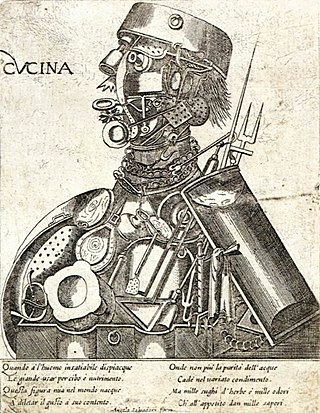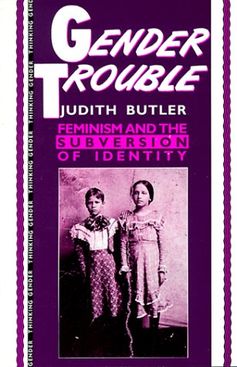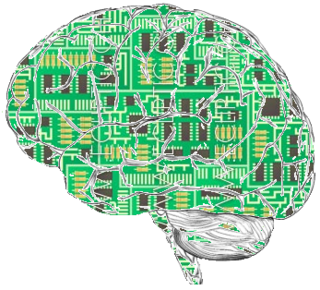
Cyberspace is a concept describing a widespread interconnected digital technology. "[The expression dates] from the first decade of the diffusion of the internet. It refers to the online world as a world 'apart,' as distinct from everyday reality. In cyberspace people can hide behind fake identities, as in the famous The New Yorker cartoon ..." The term entered popular culture from science fiction and the arts but is now used by technology strategists, security professionals, governments, military and industry leaders and entrepreneurs to describe the domain of the global technology environment, commonly defined as standing for the global network of interdependent information technology infrastructures, telecommunications networks and computer processing systems. Others consider cyberspace to be just a notional environment in which communication over computer networks occurs. The word became popular in the 1990s when the use of the Internet, networking, and digital communication were all growing dramatically; the term cyberspace was able to represent the many new ideas and phenomena that were emerging.

In metaphysics, ontology is the philosophical study of being, as well as related concepts such as existence, becoming, and reality.
Substance theory, or substance–attribute theory, is an ontological theory positing that objects are constituted each by a substance and properties borne by the substance but distinct from it. In this role, a substance can be referred to as a substratum or a thing-in-itself. Substances are particulars that are ontologically independent: they are able to exist all by themselves. Another defining feature often attributed to substances is their ability to undergo changes. Changes involve something existing before, during and after the change. They can be described in terms of a persisting substance gaining or losing properties. Attributes or properties, on the other hand, are entities that can be exemplified by substances. Properties characterize their bearers; they express what their bearer is like.
Reality is the sum or aggregate of all that is real or existent within a system, as opposed to that which is only imaginary, nonexistent or nonactual. The term is also used to refer to the ontological status of things, indicating their existence. In physical terms, reality is the totality of a system, known and unknown.

Discourse is a generalization of the notion of a conversation to any form of communication. Discourse is a major topic in social theory, with work spanning fields such as sociology, anthropology, continental philosophy, and discourse analysis. Following pioneering work by Michel Foucault, these fields view discourse as a system of thought, knowledge, or communication that constructs our experience of the world. Since control of discourse amounts to control of how the world is perceived, social theory often studies discourse as a window into power. Within theoretical linguistics, discourse is understood more narrowly as linguistic information exchange and was one of the major motivations for the framework of dynamic semantics, in which expressions' denotations are equated with their ability to update a discourse context.
An internet relationship is a relationship between people who have met online, and in many cases know each other only via the Internet. Online relationships are similar in many ways to pen pal relationships. This relationship can be romantic, platonic, or even based on business affairs. An internet relationship is generally sustained for a certain amount of time before being titled a relationship, just as in-person relationships. The major difference here is that an internet relationship is sustained via computer or online service, and the individuals in the relationship may or may not ever meet each other in person. Otherwise, the term is quite broad and can include relationships based upon text, video, audio, or even virtual character. This relationship can be between people in different regions, different countries, different sides of the world, or even people who reside in the same area but do not communicate in person.
A virtual community is a social network of individuals who connect through specific social media, potentially crossing geographical and political boundaries in order to pursue mutual interests or goals. Some of the most pervasive virtual communities are online communities operating under social networking services.

True Names is a 1981 science fiction novella by American writer Vernor Vinge, a seminal work of the cyberpunk genre. It is one of the earliest stories to present a fully fleshed-out concept of cyberspace, which would later be central to cyberpunk. The story also contains elements of transhumanism, anarchism, and even hints about The Singularity.
Hyperreality is a concept in post-structuralism that refers to the process of the evolution of notions of reality, leading to a cultural state of confusion between signs and symbols invented to stand in for reality, and direct perceptions of consensus reality. Hyperreality is seen as a condition in which, because of the compression of perceptions of reality in culture and media, what is generally regarded as real and what is understood as fiction are seamlessly blended together in experiences so that there is no longer any clear distinction between where one ends and the other begins.

Essence is a polysemic term, that is, it may have significantly different meanings and uses. It is used in philosophy and theology as a designation for the property or set of properties or attributes that make an entity or substance what it fundamentally is, and which it has by necessity, and without which it loses its identity. Essence is contrasted with accident: a property or attribute the entity or substance has contingently, without which the substance can still retain its identity.

In computing, an avatar is a graphical representation of a user or the user's character or persona. Avatars can be two-dimensional icons in Internet forums and other online communities, where they are also known as profile pictures, userpics, or formerly picons. Alternatively, an avatar can take the form of a three-dimensional model, as used in online worlds and video games, or an imaginary character with no graphical appearance, as in text-based games or worlds such as MUDs.

Gender Trouble: Feminism and the Subversion of Identity is a book by the philosopher Judith Butler in which the author argues that gender is performative, meaning that it is maintained, created or perpetuated by iterative repetitions when speaking and interacting with each other.
"A Rape in Cyberspace, or How an Evil Clown, a Haitian Trickster Spirit, Two Wizards, and a Cast of Dozens Turned a Database into a Society" is an article written by freelance journalist Julian Dibbell and first published in The Village Voice in 1993. The article was later included in Dibbell's book My Tiny Life on his LambdaMOO experiences.
Internet identity (IID), also online identity, online personality or internet persona, is a social identity that an Internet user establishes in online communities and websites. It may also be an actively constructed presentation of oneself. Although some people choose to use their real names online, some Internet users prefer to be anonymous, identifying themselves by means of pseudonyms, which reveal varying amounts of personally identifiable information. An online identity may even be determined by a user's relationship to a certain social group they are a part of online. Some can be deceptive about their identity.

Mind uploading, whole brain emulation, or substrate-independent minds, is a use of a computer or another substrate as an emulated human brain. The term "mind transfer" also refers to a hypothetical transfer of a mind from one biological brain to another. Uploaded minds and societies of minds, often in simulated realities, are recurring themes in science-fiction novels and films since the 1950s.
A virtual artifact (VA) is an immaterial object that exists in the human mind or in a digital environment, for example the Internet, intranet, virtual reality, cyberspace, etc.
Identity tourism may refer to the act of assuming a racial, ethnic, socioeconomic, sexual or gender identity for recreational purposes, or the construction of cultural identities and re-examination of one’s ethnic and cultural heritage from what tourism offers its patrons.

In philosophy of mind, qualia are defined as instances of subjective, conscious experience. The term qualia derives from the Latin neuter plural form (qualia) of the Latin adjective quālis meaning "of what sort" or "of what kind" in a specific instance, such as "what it is like to taste a specific apple — this particular apple now".
Technoself studies, commonly referred to as TSS, is an emerging, interdisciplinarity domain of scholarly research dealing with all aspects of human identity in a technological society focusing on the changing nature of relationships between the human and technology. As new and constantly changing experiences of human identity emerge due to constant technological change, technoself studies seeks to map and analyze these mutually influential developments with a focus on identity, rather than technical developments. Therefore, the self is a key concept of TSS. The term "technoself", advanced by Luppicini (2013), broadly denotes evolving human identity as a result of the adoption of new technology, while avoiding ideological or philosophical biases inherent in other related terms including cyborg, posthuman, transhuman, techno-human, beman, digital identity, avatar, and homotechnicus though Luppicini acknowledges that these categories "capture important aspects of human identity". Technoself is further elaborated and explored in Luppicini's "Handbook of Research on Technoself: Identity in a Technological Environment".

The digital sublime is the mythologization of the impact of computers and cyberspace on human experiences of time, space and power. It's also known as cyber sublime or algorithmic sublime. It is a philosophical conception of emotions that captivate the collective conscience with the emergence of these new technologies and the promises and predictions that emerge from them. These emotions are the awe, the astonishment, the rationality-subsuming glory, and the generally intense spiritual experience.









